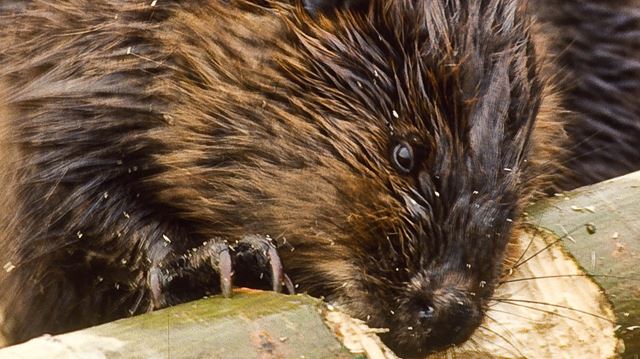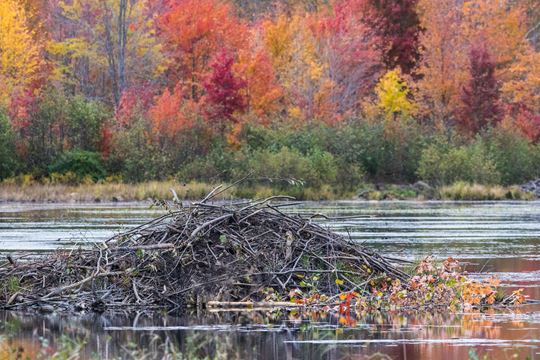 Thankfully the Furbearer Defenders letter got the attention of the Canadian Press (like the AP) which allowed the story to be published several more times yesterday. Not as many as I might like but a good number including the respectable Globe and Mail. Let’s hope that several people are feeling very uncomfortable this morning. And that the three men who watched (‘chairleaders’) are starting to think about naming the fourth. The town is really small and just over the American border from North Dakota. Near as I can tell there is only one bar and one bakery so everyone knows who did this. I don’t think they should be able to use chairs at all in the meantime. Everyone should be forced to stand until someone comes forward.
Thankfully the Furbearer Defenders letter got the attention of the Canadian Press (like the AP) which allowed the story to be published several more times yesterday. Not as many as I might like but a good number including the respectable Globe and Mail. Let’s hope that several people are feeling very uncomfortable this morning. And that the three men who watched (‘chairleaders’) are starting to think about naming the fourth. The town is really small and just over the American border from North Dakota. Near as I can tell there is only one bar and one bakery so everyone knows who did this. I don’t think they should be able to use chairs at all in the meantime. Everyone should be forced to stand until someone comes forward.
In the time we need hopeful things. Yesterday I was invited to meet with the junior high principal to talk about the way teachers and students might be involved with their new flat-tailed neighbors. This was made possible by former Worth A Dam member Kathi McGlaughlin who’s on the school board and made the introductions.
It turns out it really is true after all. It’s not WHAT you know but WHO you know that matters.

In the mean time we purchased a very cheap efficient camcorder that we’re loaning to the kindly resident who’s deck overlooks our wayward beavers. She has seen something little hanging out with them in the shadows and we’re hopeful we can guess what that is. Fingers crossed we will see soon.
And something else to restore our faith in Canadian men in the vicinity of beavers. A lovely article from naturalist Michael Runtz (author of the beautiful “Dam Builders“) about beavers getting ready for winter.
Beavers are busy preparing for winter
 If anyone has recently visited a beaver pond – the masterpiece creation of these remarkable rodents – two things would be apparent. One is that the beaver lodge has undergone a noticeable change in appearance. Plenty of fresh mud adorns its outer surface. Another is that a fallen forest had sprung up next to the lodge.
If anyone has recently visited a beaver pond – the masterpiece creation of these remarkable rodents – two things would be apparent. One is that the beaver lodge has undergone a noticeable change in appearance. Plenty of fresh mud adorns its outer surface. Another is that a fallen forest had sprung up next to the lodge.
The mud is a sure sign that freezing temperatures are in the not-too-distant future. Starting in late September, beavers begin plastering mud over their lodges. This serves as insulation during winter. As the days get shorter and nights colder, beavers continue to add material during the day, especially on overcast days in November.
 Mud is dug up from the pond’s bottom, likely not far from the two underwater entrances. Mud is carried with both front hands holding it against the chest, much in the way that we carry a load of firewood. But beavers seldom carry just a load of mud to the top of the lodge. They inevitably carry a stick or two as well, which are clenched between its teeth.
Mud is dug up from the pond’s bottom, likely not far from the two underwater entrances. Mud is carried with both front hands holding it against the chest, much in the way that we carry a load of firewood. But beavers seldom carry just a load of mud to the top of the lodge. They inevitably carry a stick or two as well, which are clenched between its teeth.
This double carry amazes me because it is done while a beaver waddles up its lodge with its head in the air, chin pressing down on the mud load it is carrying. It cannot see its feet, which are stepping across protruding sticks surrounded by slippery mud. Despite walking up a slope replete with trip hazards, I’ve never seen a beaver stumble.
The “fallen forest” is the beavers’ winter pantry. Beavers don’t hibernate and so eat every day. During the autumn they fell trees and cut off branches, which are dragged to the pond and piled up next to the lodge. The huge pile, which extends from the surface down to the bottom, contains branches that will be pulled into the lodge where their bark will be eaten. If you examine a food pile from its top to the bottom, you would see a change in the type of branches it contains.
Near the bottom you would likely find Trembling Aspen, Willow, and White Birch branches for these are beavers favourite foods. But on the top you would likely see alder, cedar, and fir branches, items usually deemed inedible. These are placed on top because the ice renders them inaccessible during winter. Their role is to hold down the best foods under the ice where they remain accessible all winter.
Ahh articles like this are good for the chair-battered spirit. Do you think the appearance of this the day after such horrors is just a coincidence or is their a National Beaver Board in Canada that ordered this just in time? Either way, I’m grateful When I read his paragraph about the ‘waddle’ I think always of this famous video. Another feel good moment between beavers and humans.

